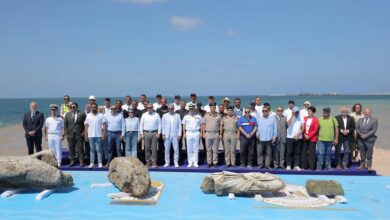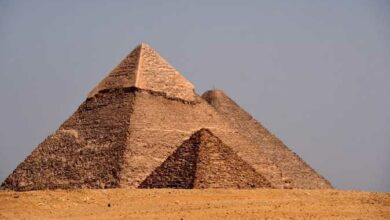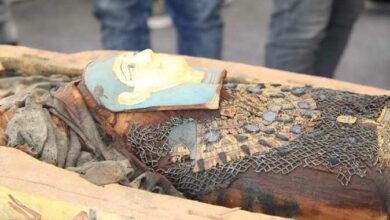
The joint Egyptian-German archaeological mission discovered a more than 13,000 ostraca dating back to the Ptolemaic era, the beginning of the Roman era, the Coptic era and the Islamic era, during excavations in the archaeological area of Sheikh Hamad near the Temple of Atribes, west of Sohag Governorate, the Ministry of Tourism and Antiquities said in a statement.
Atribes is one of the ancient archaeological cities of the ninth region of Upper Egypt, located on the western bank of the Nile near the desert edge, about 7 km southwest of Sohag. The name originates in the ancient Egyptian word (Hout Rabit), meaning the seat of the goddess Rabit. Then it became in the Greek “Atryps” and in the Coptic “Atriba” or “Adriba”.
Secretary General of the Supreme Council of Antiquities Mostafa Waziry said that these ostraca (fractures of pottery pots) have inscriptions in the ancient Egyptian language in the form of demotic, hieratic and hieroglyphic scripts, or in the form of Greek, Coptic and Arabic writing.
He stressed the importance of this discovery as it provides an opportunity for researchers to study the economic life of the city of Atribes, and the dealings of the city’s residents during its ancient times, as well as highlights the importance of the archaeological site as the second most important source of the discovered ostraca after the site of Deir al-Madina west of Luxor.
These writings refer to the financial transactions that took place during this period, related to buying wheat and bread. It also contains lists of the names of a number of people and their families.
Head of the mission from the German team, Christian Leites, explained that the members of the mission are examining and studying the ostraca carefully to get to know the community and its activities in that important period in the history of Egypt, as the writings on some ostraca showed it possibly belonged to a school for teaching demotic, hieratic and hieroglyphics and Greek language.
Professor Mohamed Abdel Badei, head of the Central Administration of Upper Egypt, said that the mission also reached a number of Greek ostraca dating back to the end of the Roman era or the Byzantine era (the period from the third until the sixth century AD).




